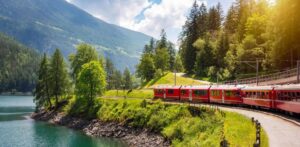© 2025 AffordableJourney. Built with care by our team. All rights reserved.
Why Tanzania’s Ngorongoro Crater Feels Like Another World
By Hannah Greer
Stepping into Tanzania’s Ngorongoro Crater is like entering a world apart — a vast, sunken caldera teeming with life, breathtaking landscapes, and ancient mysteries. Nestled within the Serengeti ecosystem, this UNESCO World Heritage Site is one of Africa’s most spectacular natural wonders.
During my visit, I was overwhelmed by the sheer diversity of wildlife, the striking beauty of the crater walls, and the deep connection between nature and culture that permeates the area. In this post, I’ll share my immersive experience exploring Ngorongoro, its unique ecosystem, and practical tips to help you make the most of your own journey to this incredible destination.
Discovering Ngorongoro Crater: A Natural Marvel
Ngorongoro Crater formed approximately two to three million years ago following the collapse of a massive volcano. The resulting caldera is roughly 20 kilometers (12 miles) in diameter and nearly 600 meters (2,000 feet) deep, creating an enclosed ecosystem that supports an astonishing variety of animals.
Its geography and isolation have preserved a wildlife sanctuary unlike anywhere else, offering a snapshot of pristine African wilderness.
The Wildlife Wonderland: Giants, Predators, and Everything In Between
Ngorongoro is home to one of the densest populations of wildlife on the planet. During my safari, I encountered everything from towering elephants and graceful giraffes to elusive black rhinos and stealthy lions.
What fascinated me most was the unique balance of predator and prey in this enclosed environment — watching lions stalking zebras or hyenas scavenging provided a raw glimpse into nature’s circle of life.
The Landscape: A Mosaic of Ecosystems
The crater floor is a patchwork of habitats, including grassy plains, marshlands, and acacia forests. This diversity supports different species, making it an ideal place for wildlife viewing year-round.
The crater’s centerpiece, Lake Magadi, often attracts large flocks of flamingos, painting the landscape with vibrant pink hues. Exploring these varied ecosystems felt like moving through multiple worlds in one place.
The Maasai People: Living in Harmony with Nature
Ngorongoro is also home to the Maasai, a semi-nomadic people who have coexisted with the wildlife for centuries. I had the privilege of visiting a Maasai village, learning about their customs, cattle herding lifestyle, and deep respect for the land.
Their presence adds a rich cultural layer to the natural wonder, reminding visitors of the important human dimension to conservation.
Safari Adventures: Tips for Exploring Ngorongoro
Best Time to Visit: June to October (dry season) for optimal wildlife sightings.
Getting Around: Guided 4×4 safaris are essential; self-driving is not recommended.
What to Bring: Binoculars, camera, sun protection, and layered clothing (it can be chilly in the morning).
Respect Rules: Stay inside vehicles, maintain distance from animals, and follow guide instructions.
My Personal Experience: Awe, Connection, and Reflection
Driving into the crater at dawn, I was struck by the silence and the vastness of the landscape. Spotting a pride of lions basking in the early light felt like witnessing a sacred moment.
Throughout the day, I felt a profound connection to nature and a renewed appreciation for the delicate balance sustaining life here. The crater is not just a place to see animals — it’s a place to feel the heartbeat of the wild.
Conservation Challenges and the Future of Ngorongoro
Despite its protected status, Ngorongoro faces threats from increasing tourism, human-wildlife conflict, and environmental changes. Supporting responsible tourism and local conservation initiatives is vital to preserving this wonder for future generations.
A Journey to Another World
Ngorongoro Crater is more than a destination; it’s an invitation to step into a different realm where nature reigns supreme and every moment is filled with wonder. For me, it was a transformative journey that deepened my respect for our planet’s wild places.




